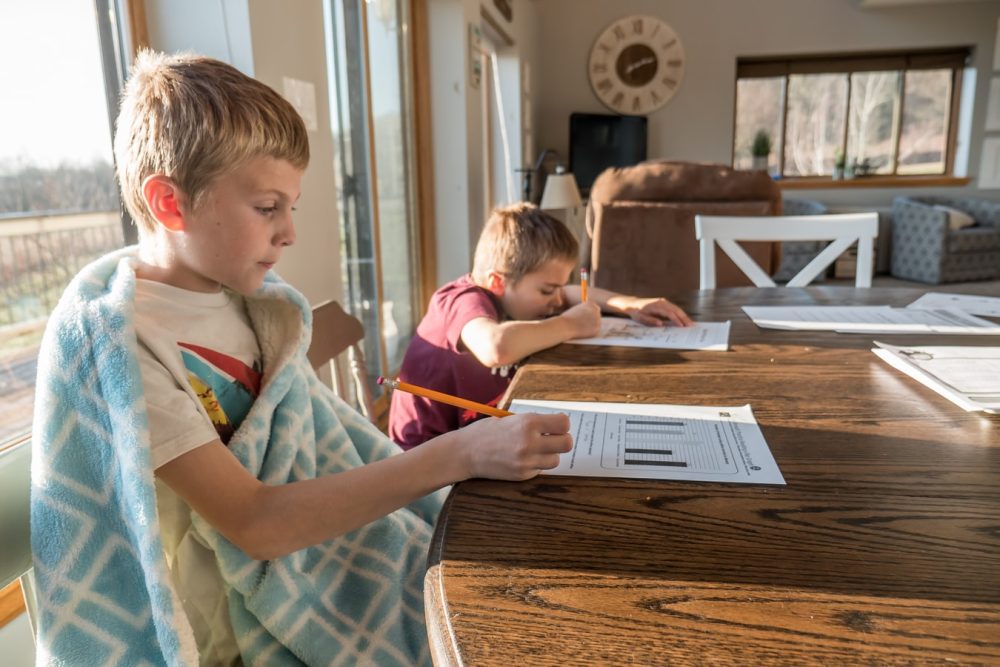I received a phone call from one of my former clients last week, a part-time working mom with two school-aged children. She wanted to discuss a subject I suspect many of us are currently struggling with – how to manage professional responsibilities while navigating our children’s virtual learning. There’s no easy answer here and no one-size-fits-all solution, but I believe there are some things we can proactively do to not only survive but thrive during this remarkable season. Besides some of the more obvious ones, like consistently carving out time for things she truly enjoys doing and cultivating a robust sense of humor (it helps, trust me), I suggested my client borrow a page from the professional teambuilding playbook and conduct an exercise in team alignment with her family.

Organizational Alignment in Business
In business, “organizational alignment” refers to a state where all departments and all employees are operating towards a common vision. Expectations are known. Goals are understood. Department work is organized towards the vision. Individual employee responsibilities are designed to drive towards the vision. Everyone is on the same page. Importantly, successful, productive alignment is maintained through open and regular communication, which includes active listening and abundant opportunities for feedback. Team alignment is proven effective in achieving business success.
Organizational Alignment in Families
So, I asked my client if she had a vision of what successful virtual learning would look like for her family. What was her vision? What would a good day look like?
We hit on practical matters. What hours of the day would be allotted to schoolwork? How would the day be structured? Where would the children sit during school hours? How would goofing off be handled? And, we discussed more abstract concepts. What mindset would she want to foster for optimal output? How would the team work together to help a member who was struggling? How did virtual learning fit into her and her family’s personal values? We were setting the stage for garnering alignment.
Communication is Key
Communication is fundamental to achieving any organizational alignment. My client and I discussed its importance in establishing team alignment for her family during this season of virtual learning. An early goal, we determined, was to engage in reflective listening with her children.
Reflective Listening to Form Alignment
Reflective listening, sometimes referred to as empathetic listening, involves carefully listening and then communicating back a deep understanding of what someone has said. Dr. Adrienne Boissy, neurologist and chief experience officer at the Cleveland Clinic, does a great job illustrating reflective listening in this article, and underscores that “soliciting and applying someone’s feedback is fundamental to making that person feel seen and valued.” Moreover, she explains that reflective listening can improve programs and process, something she’s termed “empathy operationalized.” This concept translates directly to my client’s goal of building alignment. Her children’s needs and desires have to be part of the equation if she wants to design a successful process for at home learning.
Creating the Alliance for Alignment
With all the necessary inputs from stakeholders (children, parents), my client will have what she needs to begin to document her ideal home learning environment for the family. Basically, she’ll be drafting an alliance. I’m a big fan of the KickStart Your Edge (KSYE) group alliance exercise. It starts with having a group capture their overall goals, intentions, and commitments. Then, do some brainstorming around their environment, their anticipated challenges and personal and group accountability. My client and I discussed how there will be some give and take but there will also, naturally, be some non-negotiables when it comes to gaining alignment on her virtual learning environment.
Documenting the Alliance Promotes the Alignment
I recommended my client, and her family, write out and post the family alliance where everyone can see it. Hers might end up looking something like this:
Intentions and Commitments:
- School hours begin at 9 a.m. and end at 1 p.m.
- Child X commits to complete their work at their desk in the den.
- Child Y commits to complete their work at the kitchen table.
- No gaming or playing during established school hours.
- Mom can expect 2 hours of uninterrupted time to work each morning.
- 60 minutes of physical activity daily. Physical activity includes biking, jumping on the trampoline, playing with friends outside, etc.
- Children can have up to 2 hours of recreational screen time daily.
Acknowledging the children’s desire for, and personal gains found in, autonomy and self-mastery, the parents will allow the children to choose the order in which they complete self-guided assignments so long as they are completed within school hours and school deadlines are met.
Ideal Environment:
- Clean and orderly atmosphere with everyone helping.
- Assign specific responsibilities for clarity.
- At the end of the school day, each child will tidy up their workspace, putting away papers and supplies.
- Quiet environment for learning. -No TV or other screens playing in the background.
- Necessary supplies available.
- Scheduled time when additional support is needed.
- Positive attitudes.
Anticipated Challenges:
- If someone is feeling off, they agree to voicing their feelings and requesting support and grace.
- Every family member has the right to kindly suggest someone in need of a time out take a time out.
- Parents will inevitably face work responsibilities that keep them from being available 24/7. Children acknowledge this reality and together the family decides ahead of time how it should be handled.
Keeping Team Members Accountable
Documenting the alliance promotes accountability. Merriam-Webster defines accountability as “an obligation or willingness to accept responsibility or to account for one’s actions.” This Inc. article goes into detail on accountability partnerships, pointing out that group accountability is a highly effective strategy for goal setting and goal attainment. In family team alignment, agreeing on goals and repercussions to alliance deviations forms the structure for the accountability. For example, taking the above example further, my client’s family alliance may include an accountability section, with entries that might look like this:
- If someone is feeling off and their emotions are at risk of tipping the environment into a negative state, he/she will concede to a 30-minute cooling off period in their room.
- If school assignments are not completed by the end of the school day, they will be completed after dinner the same day. No electronic devices until assignments are completed.
Team Alignment is a Game Plan and the Play Book
And so, with 1.) established intentions and commitments, created through open, effective communication, 2.) a clear vision of the ideal environment, 3.) an honest assessment of anticipated challenges or roadblocks and 4.) an agreed-upon system for enforcing and reinforcing accountability, the family or team has a solid game plan and a documented play book. As is the case in the business world, all stakeholders are aligned. Expectations are known. Everyone is marching in the same direction. And, if someone gets off track, there is a plan in place to course correct.
It’s true, COVID-19 has brought real disruption to our homes. Engaging in team alignment is one proven way to manage the less-than-ideal circumstances we face. Most importantly, family team alignment protects and enhances the one real benefit this pandemic brings – more time with those we love. We can do this.
Through her work at Brain Basics, Kathy Walter has the privilege of guiding individuals and teams to their full potential. Understanding that how we show up truly matters, she combines exercises in self-awareness with personalized, proven coaching techniques to expand thinking, enhance output and create new opportunity. Contact Brain Basics to learn more.

